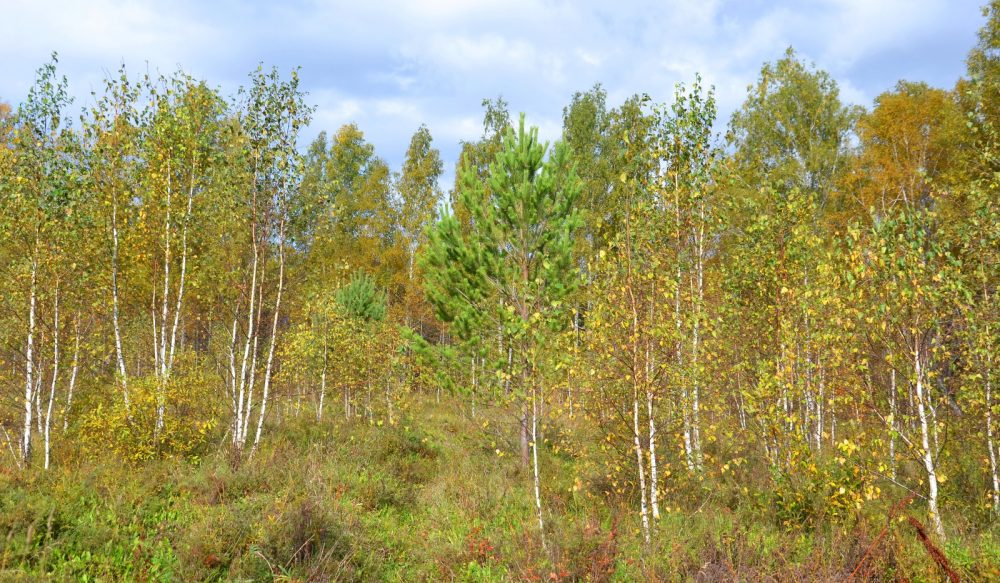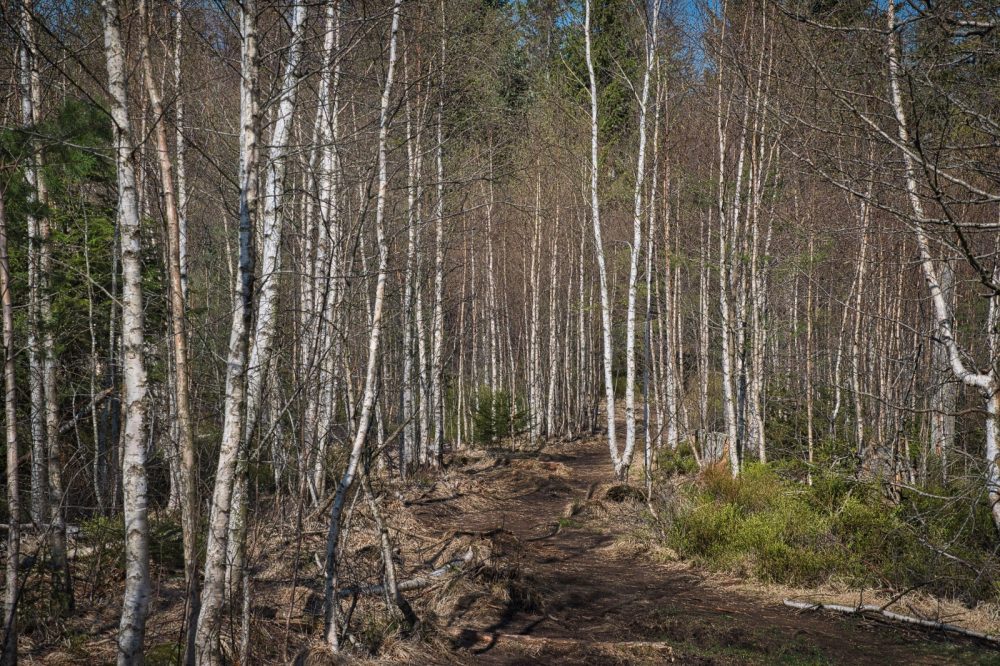Researches are looking for optimal ways of silver birch planting
Recently, a constant topic of experts has been the deterioration of the health of forests and the large-scale disintegration of mainly monoculture spruce and pine forest stands. Due to the ongoing global climate changes and in connection of currently being changed species composition of forests, it can be assumed that the undesirable state of health deterioration and decay of forest stands will continue also in another years.
Along with the increase in large-scale disaster clearings, the need for the use of preparatory woody species is the subject of attention in the restoration of forest stands. Preparatory tree species create more favourable microclimatic conditions for the introduction of target tree species as part of the two-phase restoration, and these tree species also have a certain potential for wood production.
 In current time, scientists from the Opočno Research Station, VÚLHM, v. v. i., are looking into the possibilities of using preparatory tree species in the restoration of extensive clearings. They published the latest results in the article Vliv prvních výchovných zásahů na růst přípravného porostu břízy /The influence of the first silvicultural interventions on the preparatory birch stand growth/ (Dušek et al. 2022), which was published in the journal Zprávy lesnického výzkumu /Reports of Forestry Research (2/2022).
In current time, scientists from the Opočno Research Station, VÚLHM, v. v. i., are looking into the possibilities of using preparatory tree species in the restoration of extensive clearings. They published the latest results in the article Vliv prvních výchovných zásahů na růst přípravného porostu břízy /The influence of the first silvicultural interventions on the preparatory birch stand growth/ (Dušek et al. 2022), which was published in the journal Zprávy lesnického výzkumu /Reports of Forestry Research (2/2022).
Silver birch is one of our most promising preparatory trees, as it is able to grow in a wide range of natural conditions, not excluding the often extreme conditions of calamity clearings. However, to maintain the stability and vitality of birch stands, active silviculture measures of young stands is necessary.
The question is how to silviculture a birch tree. In the past, when this tree species was understood just as a weedy tree, no one used to take care about it.
From these reasons why, forest scientists established the Radkov experimental series in the Opava region in 2015-2016, at an altitude of 500 m, in a site conditions affected by water. The birch stand with some interspersed pine has arised by natural regeneration on the calamity clearing locality after the spruce stand affected by the bark beetle was removed. The experimental areas were fenced before establishment in order to eliminate the influence of game on the course of the experiment. In autumn 2016, at the age of 16 years, researchers carried out three types of experimental silvicultural interventions at three different intensities (control – no intervention, moderate intervention, strong intervention).
 In the spring of 2021, forest scientists performed periodic dendrometric measurements (counting thickness, tree height), assessment of damage and health status of the target trees, and they measured the deployment of the living crown, too.
In the spring of 2021, forest scientists performed periodic dendrometric measurements (counting thickness, tree height), assessment of damage and health status of the target trees, and they measured the deployment of the living crown, too.
After four growing seasons since the implementation of the first experimental silviculture interventions, there has been found a significant acceleration of the thickness growth of the released target trees.
The values of the height growth of the target trees has proved considerable variability. The heights of trees are mostly very depend on the habitat, therefore they are only marginally influenced by educational interventions.
The significant acceleration of thickness growth of birch after release confirms the knowledge that birch belongs to shade-intolerant trees and prefers growth in a relatively wide spacement with little competition to maintain its vitality and viability. As a pioneer woody plant, it reaches the maximum height growth already at the age of 10-20 years.
As for more detailed information about results of this experiment, this is possible to find here, where mentioned paper is disposable to be downloaded.
Authors of paper Vliv prvních výchovných zásahů na růst přípravného porostu břízy /The influence of the first silvicultural interventions on the preparatory birch stand growth/: David Dušek, Jiří Novák, Dušan Kacálek, VÚLHM, v. v. i, Research Station Opočno, e-mail: dusek@vulhmop.cz
Excerption was prepared by: Ing. Jan Řezáč, VÚLHM, v. v. i., e-mail: rezac@vulhm.cz
Illustration photos: Forest stands with silver birch
